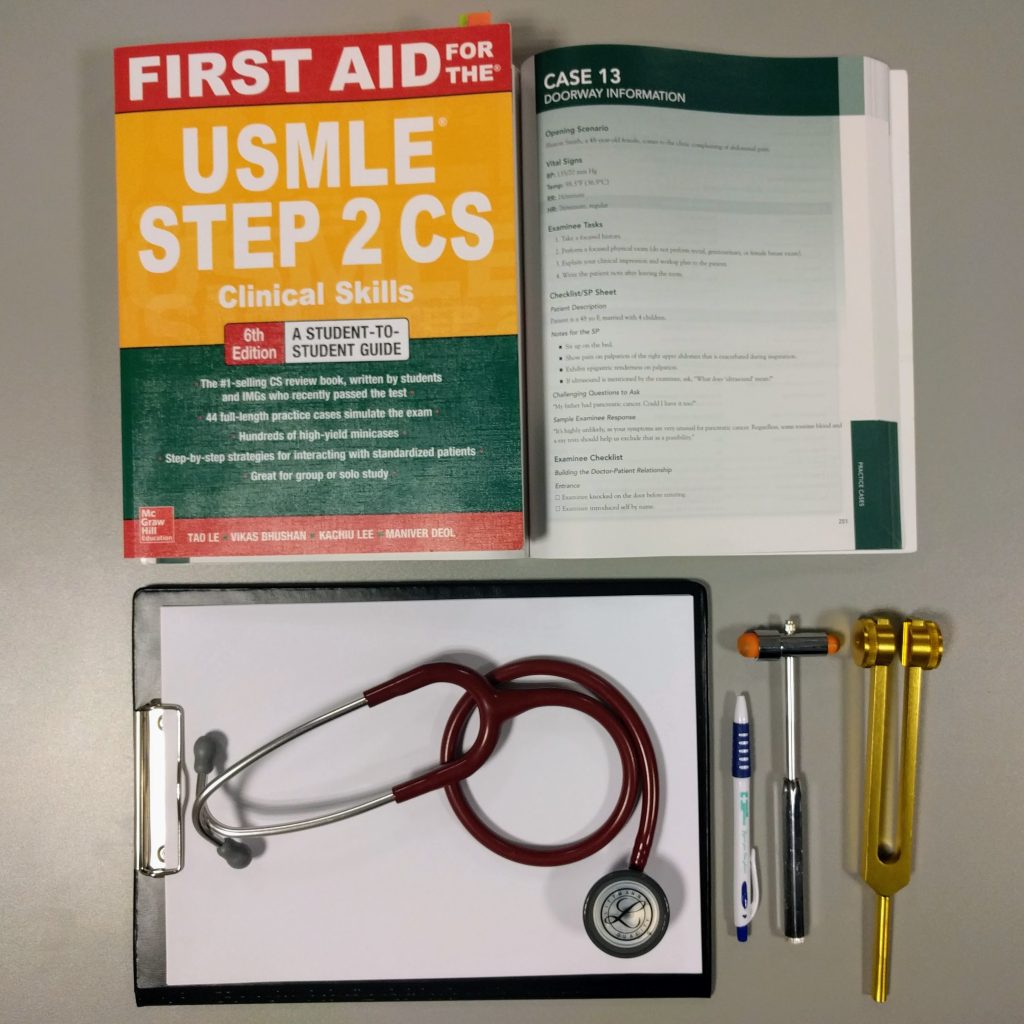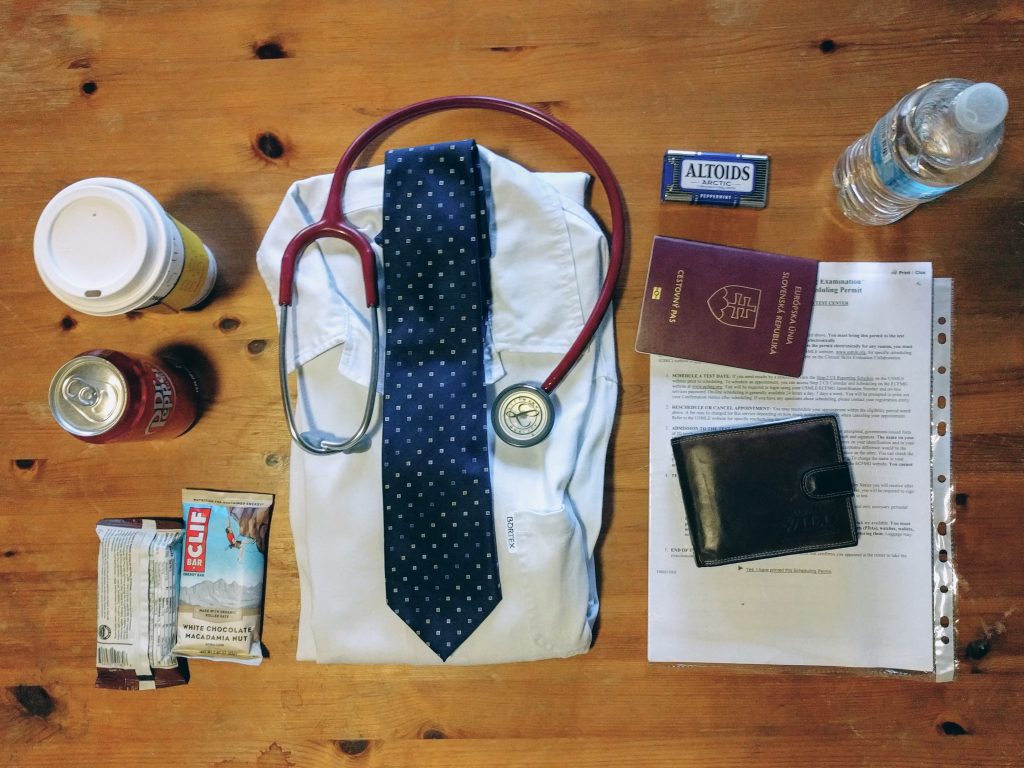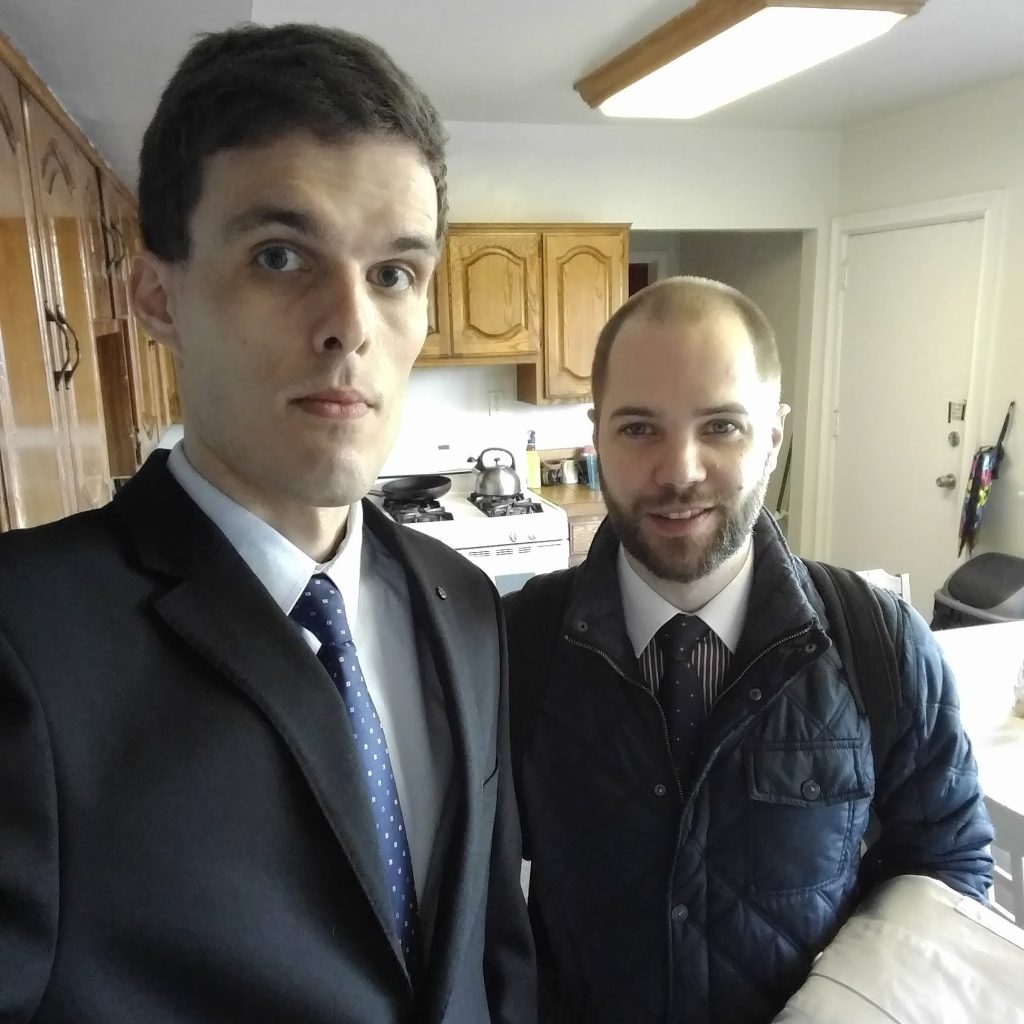It wasn’t long ago when I passed Step 1. For me it was an achievement of unparalleled greatness back then. I imagined passing Step 2 CS and obtaining that ECFMG certificate and possibly matching into residency program. It was all distant and hypothetical.
Soon enough, time went by as quickly as a wink. I planned the CS for the end of my last semester after the clerkship at Mayo Clinic. Unfortunately I had to postpone it for January 2018. Instead I recuperated my mental health. It was luck out of nowhere when I found out my friend Šimon was planning for CS as well. In the end, we managed to book an exam date for the same day in test center in Los Angeles.
The ride was about to begin.
Exam format
USMLE Step 2 Clinical Skills is a 8 hour examination testing day one skills necessary for supervised clinical practice using 12 different simulated clinical scenarios. Most of the time scenario is pretty straightforward – you’re a physician meeting a patient in an office that is presenting with some sort of problem that you need to address. A clinical encounter usually consists of patient-centered interview, physical examination, sharing clinical impression and further workup and counseling any undesirable behaviour. However, clinical skills are only one out of three components evaluated. The other two are communication and interpersonal skills, and spoken English proficiency. The final grade is Pass or Fail. To pass the entire examination an examinee has to pass in all three of the components.
Prologue
Knowing that one day I will have to face this sort of examination and that medical faculty taught me very little of clinical skills, interpersonal skills and bedside manners, I started to think in my 5th year in med school how to improve these skills on my own. I founded IFMSA Clinical Skills seminar and later on Propedeutika v praxi – a very successful peer to peer clinical skills teaching project.
One might think that this is a solid foundation for examination of this kind and it was certainly helpful. However, developing new physical examination curriculum meant that I got all of the different teaching systems mixed up. Although the medicine is the same everywhere, habits of physical examination and clinical note writing are unique to each place. On the other hand, interpersonal skills I adapted from British and American system are unique in Czech republic, often intentionally avoided with the excuse of ‘specific culture and healthcare system’.
Preparation
Study material
Well acquainted with my strengths and weaknesses along with ‘one shot, one opportunity’ mindset I started with the books. I got Kaplan’s USMLE Step 2 CS Core Cases recommended as the best book by two people I very much respect in Masaryk USMLE community. So I started with this one as an ultimate study material.
The book has useful physical examination and history taking part. The cases are basic and covering most of the topics examined. The advantage is interesting cases about uncommon topics like cancer, pregnancy and routine check-up, neuroleptic malignant syndrome, and phone consults. Downsides are many typos and condensed case history format that requires pre-reading before role play.
The other highly commended book is First Aid USMLE Step 2 CS. I avoided this one for a long time because I already bought the Kaplan’s and didn’t want to be confused with too many books and study systems. Despite all this I bought the latest sixth edition of the First Aid just month before my scheduled appointment and it was definitely worth it.
First Aid is also organized in several parts, one for history taking and examination skills, another for clinical cases. One advantage over Kaplan’s are mini-cases that are one or two sentences short clinical cases with list of differential diagnoses and work-up required. It’s especially useful for last minute review or just practicing on your own or with study partner when you don’t have time and place for full clinical encounter practice. The new edition has revised physical examination chapters with new illustrations of examination maneuvers. However, what I like the newest editions most for are suggested questions for each part of the case history. History in every case is structured in systematic manner, most of the time using mnemonics like SIQORAAA PAMHFROSS. I found it very useful as I had a hard time formulating short yet clear questions.
Practice, practice, practice
Four months before the scheduled exam date and after couple weeks of book reading I started practicing the clinical encounter. My wife was kind enough to role play standardized patient. First couple of months we practiced only couple of cases during the week. I also had to go to work every day which was very exhausting for me at the start.
As I said earlier patient interview, physical examination and clinical notes are somewhat different in Czechia than in United States. Of course you can do it whatever way you want but only to certain level. Notes are different completely and trying to approximate american style despite its clarity medical-wise was welcomed only by few of the colleagues.

As the exam date was coming closer we tried to set up regular meetings with Šimon to practice cases. We took turns but we managed to go through two cases each at maximum. It wasn’t unproductive time but we both felt the time could be spent much more efficiently. Two months before the exam I set up a strict routine to practice at least one case every evening after my son went to bed. It wasn’t optimal but it worked. Weekends were more free as I didn’t do any on-call shifts, so I tried to practice as much as possible during weekends. Two months before I went through the Kaplan’s cases and last month I practiced mostly the First Aid’s cases. I went through most of them twice. In the free time I practiced mini-cases using Quizlet’s premade flashcards set.
Trip
Los Angeles was first choice for couple of reasons. First, the flight tickets were relatively cheap despite the distance. Second, the weather in January is pleasant, as always in L.A. Third, there is so much to do. So we decided to make it ‘half business, half pleasure’ trip. Šimon had ESTA and I had B1/B2 visa since my clerkship in Rochester.
We booked a place with Airbnb called ‘Chanoma House’. It’s close to airport and 8 minute walk to the test center (including 4 minute waiting for the lights). The host was very friendly, the place is very cheap. Perfect for this kind of trip. However, bathroom didn’t meet standards of junior doctors expected to wash hands before and after every contact with a patient. Other than that I can highly recommend it to anyone.

The trip was one week long, Saturday to Sunday with the exam on Wednesday. We practiced each day a little bit and decided to talk only in English on the American soil. At least until the exam. The weather was nice, people friendly and food palatable. We got around with Uber and ate in franchise fast casual and casual dining restaurants. After the exam we even managed to go to a cinema and Universal Studios.

Exam Day
We got up reasonably early, ate reasonably large breakfast, suited up and head out for the exam. Unfortunately for you I am obliged not to disclose any information about the exam on that day. However, I will share some piece of information that I think will help you in the future and will not compromise the confidentiality and seriousness of the exam.
- The staff is all nice and they do realize you’re paying for all this and that you are all stressed out.
- The place is comfortable and refreshments are available during half-time break.
- Standardized patients are not very talkative and they will not interrupt you while you’re talking. Of course exceptions are made if scenario requires it. Therefore you have to deliberately ask everything that you want to know.
- SPs will sometimes gently try to guide you the right way or give you a hint. You need to realize that even though they make it very real, it’s only simulation. They do not have answers to everything. If you want to clarify how many stools they’re having a day, when they say ‘just normal’ it means it’s probably insignificant. Just move on.
- The best approximation of SPs scripts are in the First Aid. They follow similarly organized script and answer in short sentences. Just as in First Aid. Therefore I think FA is the ultimate study material for the CS.
- Do expect the post-test crash. You will not have any energy to relax. We tried and failed.


Aftermath
After refreshing sleep after the exam we felt the burden to drop. The next three days we enjoyed ourselves and I highly recommend it to anyone planning a trip to the US. It’s a great opportunity especially if you’re visiting with someone.
I got the results on Wednesday, six weeks after the exam.

Piece of advice for Masaryk students
The exam can be very challenging for Czech medical students who are not used to any type of objective clinical examination.
- Each clinical encounter is over pretty quickly if you won’t focus. Keep your attention on the most important part of the history and examination sequence. Keep track of the time and rather exit the room short of one maneuver but properly done counselling.
- Practice as many cases as possible. It’s challenging questions that you don’t expect and tricky history parts that you cannot think of that matters on exam day.
- Try to simulate clinical encounter as closely as possible. Dedicate a room for simulated doctor’s office. Knock on the door and enter. Pretend to go to the sink and wash your hands. These little details will matter on the exam. I avoided it for sake of time when practicing and during the exam I constantly felt like I forgot to do something.
- If you’re already a working doctor use mnemonic SIQORAAA PAMHFROSS in your clinical practice. It’s extremely useful. It will save you lot of time and you won’t forget anything.